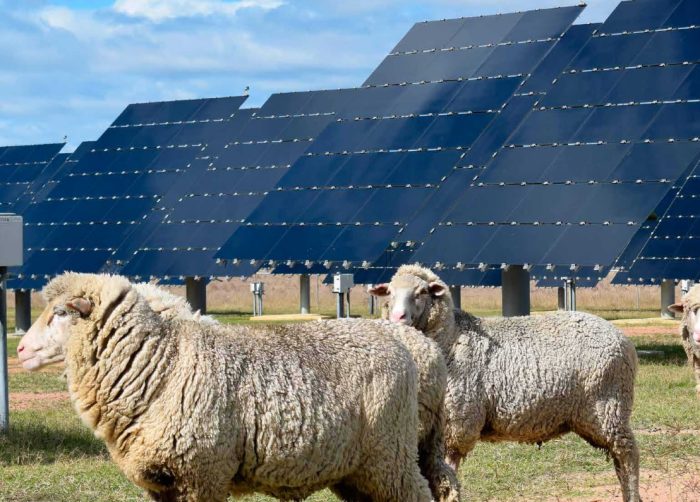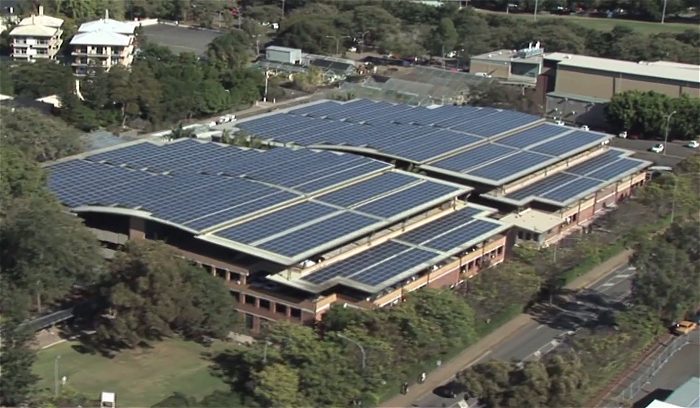UQ’s recently released Sustainability Scorecard 2016 reveals the University generated more than 8.8 million kilowatt-hours of electricity from its 47,000+ solar panels last year.
Among UQ’s PV installations is the 3.275- megawatt solar array at its Gatton campus, completed in December 2014. Comprised of 37,000 thin-film solar panels, the system generates enough clean energy to power more than 1000 average Australian homes and avoids 5,300 tonnes of carbon dioxide-equivalent annually. The sheep pictured above are helping to cut maintenance costs at the facility by keeping the grass down.
UQ’s other large-scale system is the 1.22- megawatt array at its St. Lucia campus, which went live in early 2011. Consisting of just over 5,000 solar modules, at the time of its construction it was the largest rooftop solar power system in Australia.
Sustainability Scorecard 2016 also reveals the University of Queensland achieved a 9.9% decrease in energy intensity last year compared to a 2013 baseline and more than $2 million was saved on energy compared to the same year. In terms of emissions, 15,805 tonnes of carbon dioxide equivalent was avoided compared to 2013.
“As one of Queensland’s biggest employers and home to the largest university population in the state, sustainability is a challenge we feel we are making significant inroads towards,” said UQ’s Chief Operating Officer Greg Pringle.
The University of Queensland has more than 50,000 students, 7,000 staff and 600 buildings. In 2015, its electricity costs amounted to close to $16.7 million – and would have been much higher if not for UQ’s solar and other energy efficiency efforts.
The PV installations are also providing valuable opportunities for training and research. For example, fixed-tilt, single-axis and dual-axis tracker technologies were used at Gatton to monitor differences between tracking systems in electrical and economic performance.
While UQ is Australia’s no.1 university in terms of capacity installed – nearly 5.8MW (peak) – other Australian universities are also set to do big things in PV.
Monash University announced its Net Zero Initiative this week, which will see MU powered by 100% renewables by 2030. Underpinning that effort will be a total of 5.5MW of on-site solar generation capacity; with the balance of electricity required to be sourced from off-site renewables.
Last month, we mentioned the University of Southern Queensland’s Sustainable Energy Solution project (Stage 2) was well under way, with solar panels being installed on the rooftops of buildings at USQ’s Springfield and Ipswich campuses.



 RSS - Posts
RSS - Posts



Speak Your Mind